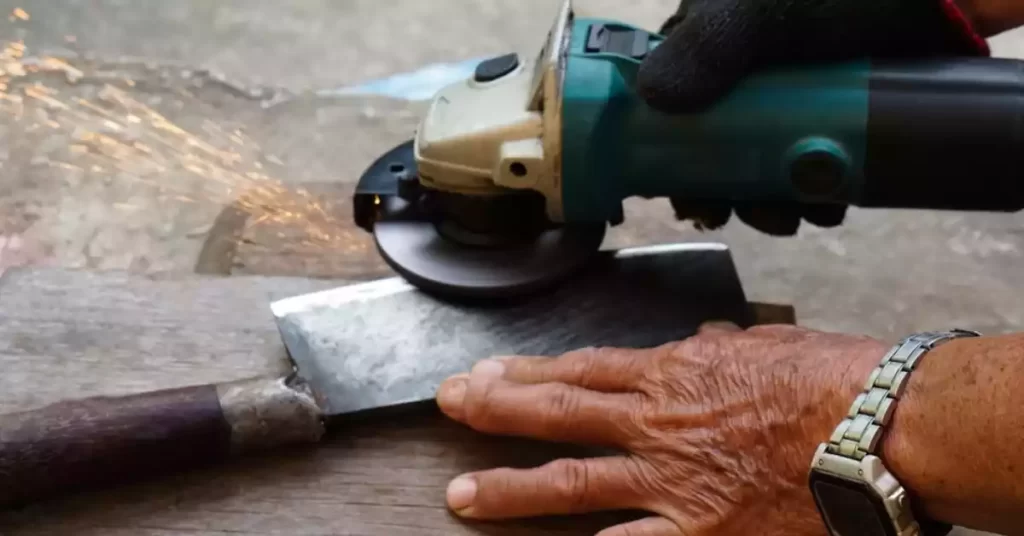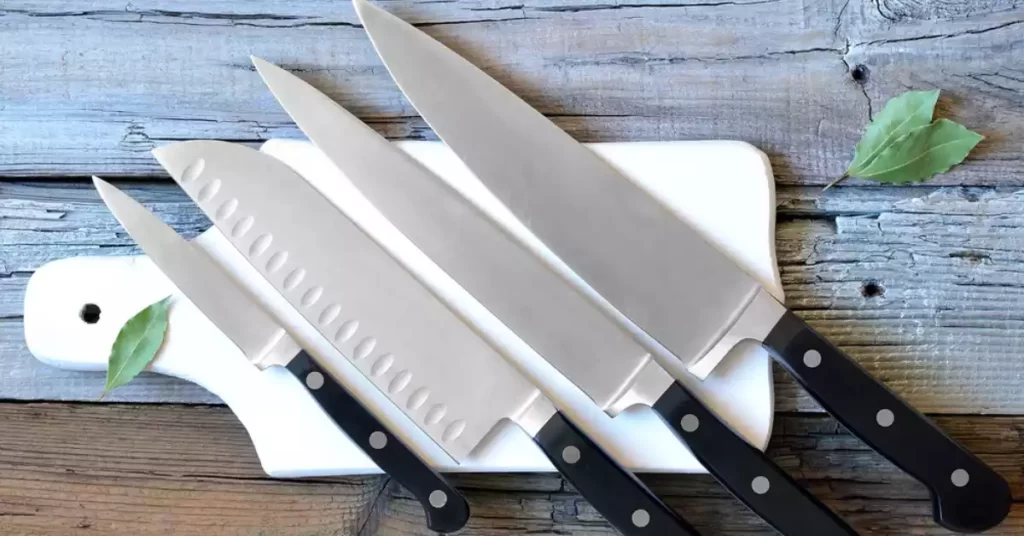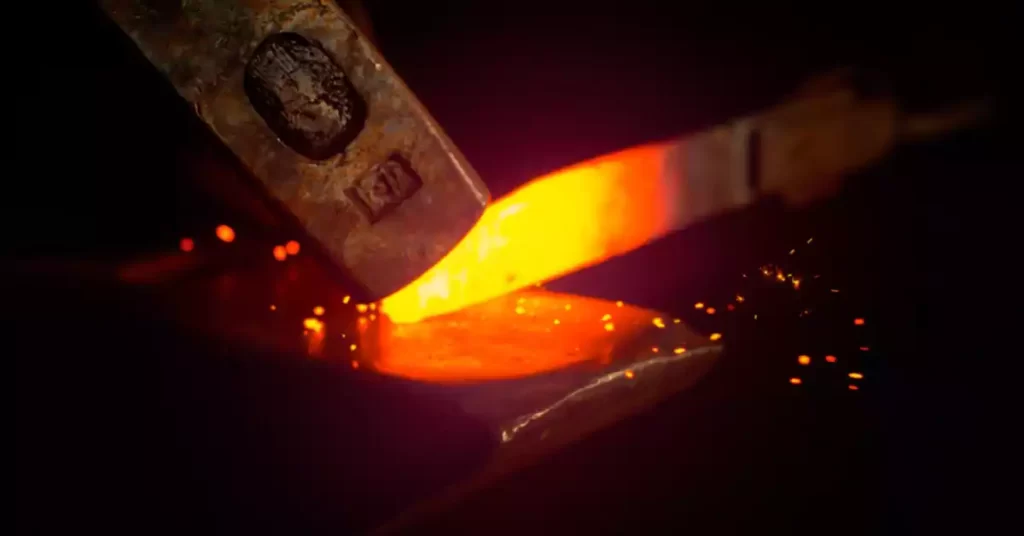Knives are an indispensable part of our daily lives, from the kitchen to outdoor adventures. The material used in their making is often a point of debate for many. Among the many options available, iron and steel knives have been around for ages, each offering a unique set of characteristics.
The essence of the debate between iron and steel knives lies in their respective properties and the impact these properties have on the knife’s performance. Iron knives, once a staple in households and battlefields, offer rustic appeal and history. On the other hand, steel knives, known for their durability and sharpness, dominate the current market.
However, in this digital age, where stainless steel utensils reign supreme, one might wonder if knives made of iron are still a thing. It’s an interesting query that takes us down a path of metallurgy, history, and practical applications of these materials.
What is an Iron Knife?
Basic Characteristics of Iron
Iron is a chemical element that has been a crucial part of human civilization for thousands of years, often symbolizing a period of human history called the Iron Age. It’s known for its ductile and malleable nature. However, pure iron is soft and is not naturally suitable for making knives due to these properties.
The ductility of iron makes it too flexible to maintain a sharp edge for a long time, and its softness implies that it would be quick to wear and tear. However, when iron is mixed with certain elements, it can transform into a stronger material suitable for knife production.

Iron Knife Properties
Despite the challenges associated with the inherent properties of iron, humans have found ways to fashion it into useful cutting tools, such as knives. When used to make a knife, iron presents a degree of firmness and can hold an edge. However, compared to more modern materials, iron knives tend to lose their edge quickly.
Moreover, these knives are susceptible to rust, given that iron reacts with both oxygen and water to form iron oxide, commonly known as rust. Therefore, iron knives require regular maintenance to keep them functional and aesthetically pleasing. Despite this, iron knives do carry a certain rustic appeal and are appreciated by certain users for their authentic, old-world charm.
Common Uses of Iron Knives
Iron knives hold a significant place in history, widely used across cultures for various purposes. Their versatility made them common tools in ancient households for food preparation. In many cultures, they were the preferred weapon for warriors due to the material’s accessibility and simplicity in production.
Iron knives were also used in various crafting and construction activities. However, the use of iron knives in modern times has significantly decreased, as more durable and efficient materials have taken their place.

What is a Steel Knife?
Understanding Steel Composition
Steel is an alloy of iron and carbon. It is the result of humans’ endeavor to improve the properties of iron to make it more suitable for various applications, including knife production.
The addition of carbon into iron enhances its hardness while maintaining its malleability. This balance of properties makes steel a superior material for making knives.
Steel Knife Attributes
The introduction of carbon into iron results in a material that is strong, durable, and can maintain its sharpness for longer periods. Steel knives are characterized by their superior hardness and edge retention compared to their iron counterparts.
Furthermore, steel is less prone to rust, especially stainless steel varieties that contain chromium. This attribute decreases the maintenance requirements for steel knives, making them a more convenient choice for most users.

Popular Applications of Steel Knives
Today, steel knives are found everywhere. In domestic kitchens, professional culinary settings, camping gear, and survival equipment, steel has become the material of choice due to its durability, edge retention, and relative ease of maintenance.
Different types of steel, such as carbon steel, stainless steel, and high-carbon stainless steel, offer varying levels of hardness, corrosion resistance, and flexibility, providing options for every possible application of knives.
Comparing Iron and Steel Knives
Strength and Durability Contrast
When it comes to strength and durability, steel knives outperform iron ones. The incorporation of carbon in steel improves its hardness, enabling it to withstand more pressure and usage without deforming or breaking. This hardness also allows steel knives to retain their form for years, ensuring they can continue to function effectively with proper care.
Sharpness Comparison
In terms of sharpness, steel knives also have the upper hand. Thanks to the carbon in their composition, they can hold an edge much longer than iron knives. This is a vital property for knives as it determines their efficiency in cutting, slicing, and chopping.
Maintenance Requirements
Given that iron is prone to rust, it requires frequent care and maintenance to prevent corrosion. On the other hand, steel knives, especially those made of stainless steel, show high resistance to rust, thus reducing the need for maintenance. This is another reason why most users today prefer steel knives over iron ones.

Are Knives Made of Iron?
History of Iron Knife Usage
Iron knives have played a central role in human history. From the households of ancient civilizations where they were used for daily tasks, to the battlefields where soldiers wielded them against enemies, iron knives were a common sight.
However, the discovery and advancement in the production of steel gradually replaced iron in knife-making, due to the superior properties that steel offered.
Modern Production: Are Iron Knives Still Made?
While the use of pure iron knives is rare in contemporary times, they are not entirely extinct. Certain craftsmen and enthusiasts who appreciate the historical and aesthetic value of iron might still make knives out of this material.
However, for the average user looking for practicality and performance, steel has become the standard material for knives. It’s important to note that while steel is predominantly used in knife production, the iron in it still plays a significant role, serving as the base element of the alloy.
Benefits of Steel Knives Over Iron
Increased Strength and Durability
One of the main advantages of steel knives over iron is their increased strength and durability. The hardness that carbon provides to the iron-based alloy ensures that steel knives can withstand frequent usage and high pressure without easily breaking or deforming. This strength and durability translate to a longer lifespan for steel knives, given proper care and use.
Superior Sharpness and Edge Retention
The sharpness of a knife is a critical property, as it determines the ease and precision of cutting. Steel, thanks to its carbon content, can be sharpened to a finer edge and maintain that edge for longer periods compared to iron. This makes steel knives a preferred choice for tasks that require precise and clean cuts, such as in culinary settings.
Low Maintenance and Corrosion Resistance
Steel’s resistance to rust is another selling point. Stainless steel varieties, in particular, offer excellent resistance to corrosion due to their chromium content. This property makes steel knives low maintenance compared to iron ones, as they require less frequent care to prevent rust.

How to Choose Between Iron and Steel Knives
Consideration of Knife’s Purpose
The choice between an iron and steel knife depends largely on the intended purpose of the knife. If you’re a fan of historical reenactments, a blacksmith, or someone who appreciates rustic aesthetics, an iron knife could be an interesting addition to your collection.
On the other hand, for practical uses such as cooking, camping, or other tasks requiring a reliable and efficient cutting tool, a steel knife would be a better choice. Steel knives offer a balance of strength, sharpness, and durability that caters to the demands of modern users.
Personal Preferences and Budget
Personal preferences also play a role in choosing between iron and steel knives. Some might prefer the old-world charm and unique feel of an iron knife, while others may opt for the modern, efficient, and practical advantages of a steel one. Budget considerations are also essential, as the cost of knives can vary based on the material, brand, craftsmanship, and other factors.
Frequently Asked Questions
Why are steel knives more common than iron?
Steel knives are more common than iron due to their superior properties. They offer greater strength, better edge retention, and higher corrosion resistance, making them more suitable for a wide range of uses and requiring less maintenance compared to iron knives.
Can iron knives be as sharp as steel knives?
While iron knives can be sharpened to a fine edge, they typically do not hold their sharpness as long as steel knives. The carbon in steel contributes to its superior hardness and edge retention, allowing it to maintain its sharpness over prolonged use and time.
Are there any advantages of iron knives over steel ones?
While steel generally outperforms iron in practical terms, iron knives hold a historical and aesthetic appeal that some users might appreciate. They symbolize a link to our past and can be prized by collectors and history enthusiasts.
Conclusion
In the realm of knives, the battle between iron and steel has been settled in favor of the latter. Steel, an alloy of iron and carbon, provides the strength, sharpness, and durability that modern knife users demand. It’s less prone to rust and requires less maintenance, making it a more convenient choice for most.
That’s not to say that iron knives have lost their place entirely. They hold a nostalgic appeal and are still valued by some for their rustic charm. They remind us of the ingenuity of our ancestors who used what was available to them to fashion tools that helped shape human civilization.
In the end, the choice between iron and steel knives comes down to individual needs and preferences. Whether it’s the charm of the old or the efficiency of the new, both materials have their place in the wide and diverse world of knives.
